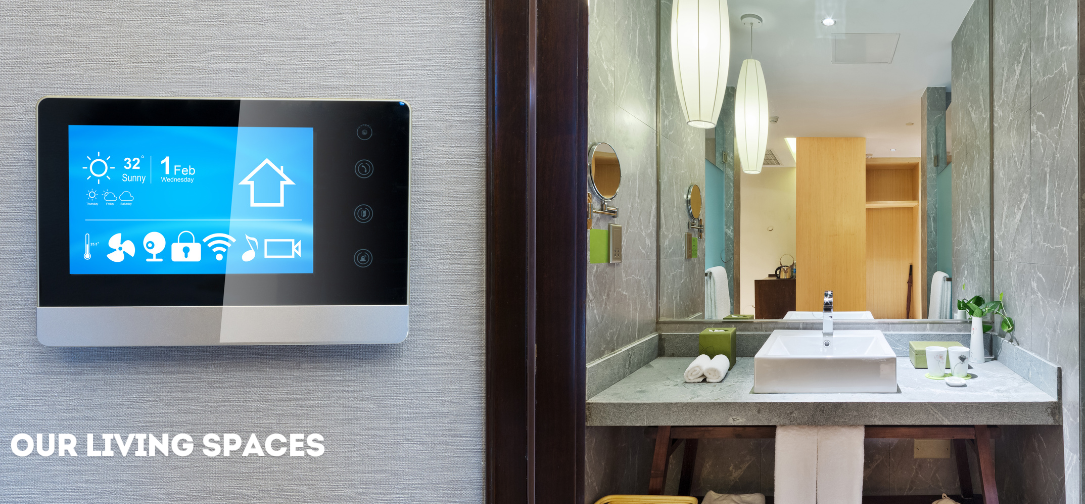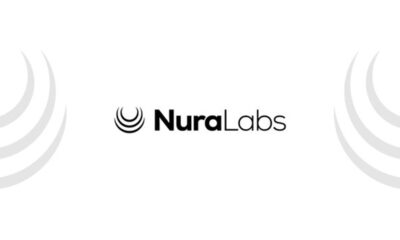Home & Family
How Smart Homes Are Transforming the Way We Live in 2025

In 2025, smart homes have evolved from futuristic concepts to integral components of daily life, revolutionising how we interact with our living spaces. Advancements in artificial intelligence (AI), the Internet of Things (IoT), and home automation have redefined comfort, security, sustainability, and wellness. This comprehensive report delves into the current landscape of smart home technology, highlighting key trends, innovations, and their impact on modern living.
The Rise of Smart Homes: A Market Overview
The global smart home market has experienced exponential growth, driven by increasing consumer demand for convenience, energy efficiency, and enhanced security. According to a report by Fortune Business Insights, the global smart home market size was valued at USD 80.21 billion in 2022 and is projected to grow from USD 93.98 billion in 2023 to USD 338.28 billion by 2030, exhibiting a CAGR of 20.1% during the forecast period.
This surge is attributed to the proliferation of connected devices, advancements in wireless communication technologies, and increased awareness of energy conservation. Smart home devices, ranging from thermostats and lighting systems to security cameras and voice assistants, are becoming more accessible and affordable, further propelling market growth.
Key Innovations Shaping Smart Homes in 2025
- AI-Powered Appliances
Artificial intelligence has become a cornerstone of smart home technology, enabling devices to learn user behaviours and preferences for a personalised experience. Modern appliances, such as refrigerators, ovens, and washing machines, are now equipped with AI capabilities that optimise performance and efficiency.
For instance, AI-enabled ovens can monitor internal conditions and adjust cooking settings automatically, ensuring perfect results every time. Smart refrigerators equipped with cameras track contents and offer meal suggestions, even catering to dietary restrictions via voice assistants like Samsung’s Bixby. These advancements enhance convenience and contribute to energy and resource conservation by reducing waste and optimising usage.
- Integrated Wellness Technologies
Health and wellness have become central themes in smart home development. Innovations such as circadian lighting systems, advanced air filtration, and smart toilets are designed to promote physical and mental well-being.
Circadian lighting systems adjust the colour temperature and brightness of lights throughout the day to align with the body’s natural rhythms, improving sleep quality and overall health. Advanced air filtration systems monitor indoor air quality and automatically purify the air, reducing allergens and pollutants.
Smart toilets, once considered luxury items, have become more mainstream due to decreasing costs and increased demand for wellness-oriented living. These toilets offer features like self-cleaning, user sensors, smart wash and dry functions, and customizable temperature and pressure settings.
- Enhanced Home Security
Security remains a top priority for homeowners, and smart home technologies have significantly advanced in this area. AI-driven security systems now offer features such as facial recognition, object and pet detection, and proactive crime prevention measures.
These systems can distinguish between familiar faces and potential intruders, reducing false alarms and enhancing response times. Integration with mobile devices allows homeowners to monitor and control security systems remotely, providing peace of mind and real-time alerts.
- Voice-Controlled Automation
Voice assistants like Amazon Alexa, Google Assistant, and Apple Siri have become integral to smart home ecosystems. They enable hands-free control of various devices, from lighting and thermostats to entertainment systems and kitchen appliances. The convenience of voice control extends to routine tasks, such as adjusting room temperatures, setting reminders, or even flushing toilets, as seen with the rise of voice-activated smart toilets in Australia. This level of automation enhances accessibility, particularly for individuals with mobility challenges, and streamlines daily routines.
- Energy Efficiency and Sustainability
Smart home technologies contribute significantly to energy conservation and sustainability efforts. Smart thermostats, for example, learn user schedules and adjust heating and cooling systems accordingly, reducing energy consumption.
According to the U.S. Energy Information Administration, home heating and cooling account for the highest percentage of residential electrical energy consumption. Smart thermostats can mitigate this by optimizing energy usage, leading to lower utility bills and reduced environmental impact. Additionally, integration with renewable energy sources, such as solar panels, allows smart homes to manage energy storage and distribution efficiently, further promoting sustainability.
The Impact on Daily Living
The integration of smart technologies into homes has transformed daily living by enhancing convenience, comfort, and efficiency.
Personalized Living Experiences
Smart homes adapt to individual preferences, creating personalized environments that cater to specific needs. From adjusting lighting and temperature to selecting music playlists, these systems learn and anticipate user behaviors, providing a tailored living experience.
Remote Monitoring and Control
The ability to monitor and control home systems remotely offers unparalleled convenience. Whether adjusting the thermostat from the office or checking security cameras while on vacation, homeowners have complete control at their fingertips.
Improved Accessibility
For individuals with disabilities or the elderly, smart home technologies offer increased independence and safety. Voice-controlled devices, automated lighting, and fall detection systems enable users to navigate their homes more easily and securely.
Challenges and Considerations
Despite the numerous benefits, smart home adoption comes with challenges that need to be addressed.
Privacy and Security Concerns
The collection and transmission of personal data by smart devices raise concerns about privacy and data security. Ensuring robust encryption, secure networks, and transparent data policies is crucial to protect user information.
Interoperability Issues
With a plethora of devices from various manufacturers, ensuring seamless integration and communication between different systems can be challenging. Standardization and compatibility are essential for a cohesive smart home ecosystem.
Cost and Accessibility
While prices for smart devices have decreased, the initial investment for a fully integrated smart home can still be substantial. Making these technologies more affordable and accessible is key to widespread adoption.
The Future of Smart Homes
As technology continues to advance, smart homes are poised to become even more intuitive and integrated. Developments in AI, machine learning, and IoT will lead to homes that not only respond to user commands but also anticipate needs and adapt proactively.
The concept of the smart home is expanding beyond individual residences to encompass entire communities and cities, leading to the development of smart cities with interconnected infrastructure and services. Initiatives like the Living Tomorrow innovation campus in Brussels exemplify this vision, showcasing how smart homes, mobility, health, and infrastructure can converge to create sustainable and efficient urban environments.
Conclusion
Smart homes in 2025 represent a significant shift in how we interact with our living spaces. Through the integration of AI, IoT, and automation, these homes offer enhanced convenience, security, and sustainability. While challenges remain, ongoing advancements and increased accessibility are paving the way for a future where smart homes are the standard, transforming the way we live.
References:
Smart Home Market Size, Share & Trends Analysis Report By Product, By Application, By Technology, By Region, And Segment Forecasts, 2023 – 2030. Fortune Business Insights.
-

 Foreign Policy5 days ago
Foreign Policy5 days agoInside Schedule F: Will Trump’s Federal Workforce Shake-Up Undermine Democracy?
-

 Press Release4 days ago
Press Release4 days agoIn2space Launches Campaign to Make Space Travel Accessible for All
-

 Press Release5 hours ago
Press Release5 hours agoNura Labs Files Revolutionary Patent: AI-Powered Wallet Solves the $180 Billion Crypto Staking Complexity Crisis















